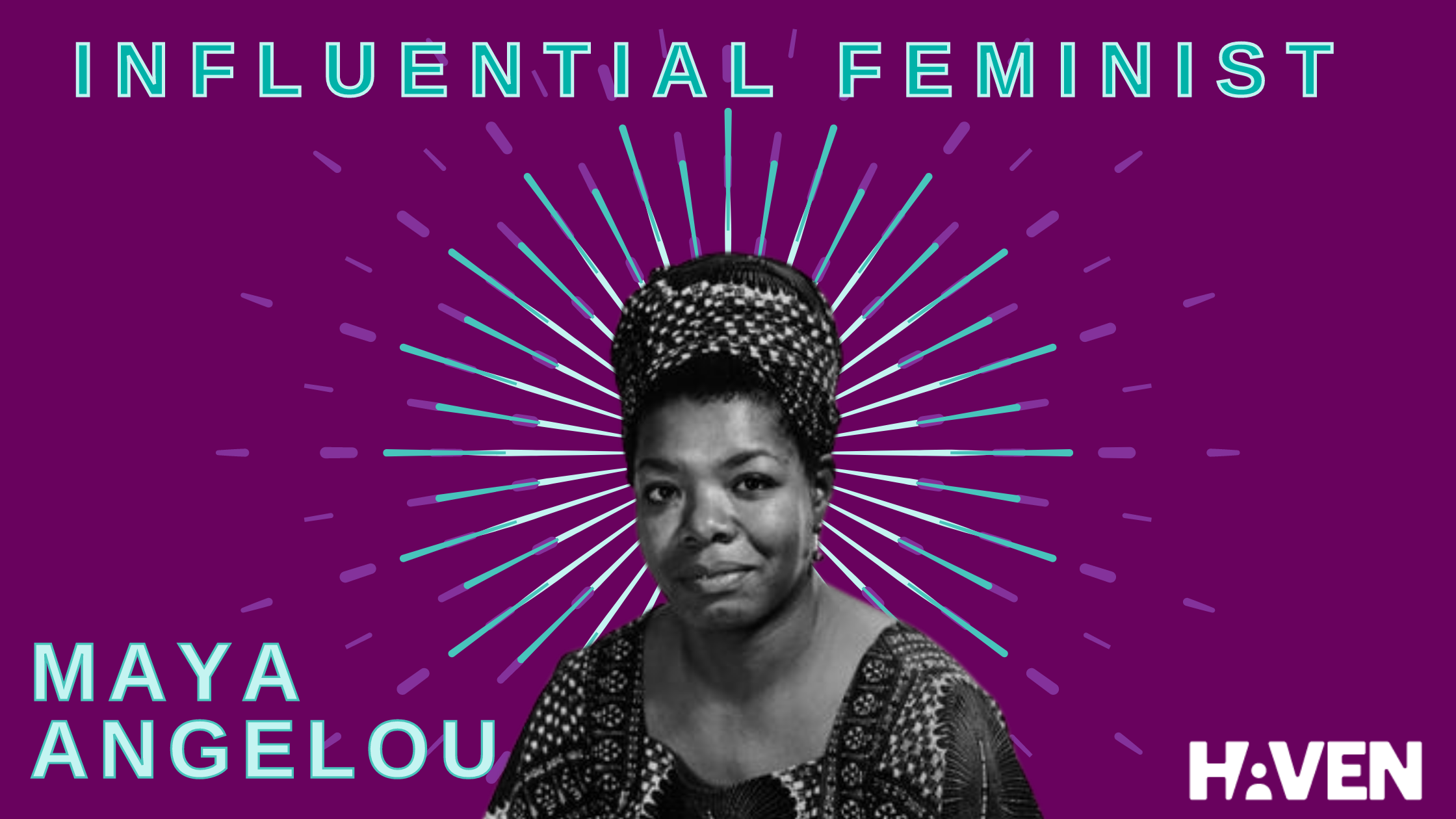Ruth Bader Ginsburg
- HAVEN ADMIN
- March 12, 2021
- Uncategorized
- 0 Comments

Ruth Bader Ginsburg: Game Changer, Trailblazer, G.O.A.T
HAVEN is honoring Ruth Bader Ginsburg (1933-2020) for Women’s History Month. Ginsburg took the torch for women’s rights and blazed a new trail of legal protections. She was small in stature but her will and wisdom was enormous. She came into the professional world wielding a sledgehammer, driving a wrecking ball and broke down as many barriers as she could during her 60 years working in the field of law and serving as a judge.
Ginsburg herself experienced gender discrimination while at Harvard Law School and this treatment inspired her to pursue a career in civil rights activism. A Dean in her law school openly questioned her as to why she was taking up a seat that otherwise could be occupied by a man. At that time, she was only one of nine women in her entire class (while today it boasts many more, almost 50% of women make up the 2023 class). Despite graduating first in her class at Colombia Law, Ginsburg received no job offers from any of the firms she had worked with in the past or any new ones where she had applied. All replied that they were not willing to hire a woman. Even after accepting a faculty position at Rutgers Law School, Ginsburg’s salary was significantly lower than her male counterparts.
“You think about what would have happened … Suppose I had gotten a job as a permanent (law) associate. Probably I would have climbed up the ladder and today I would be a retired partner. So often in life, things that you regard as an impediment turn out to be great good fortune.”-Ruth Bader Ginsburg
While stigma and harmful societal norms fanned the flames of inequality, Ginsburg flexed her muscles. She would not give in to what was expected of women, to accept less and be grateful they had any slice of the pie. She formed and led the Women’s Rights Project at the ACLU. Major achievements of this project provided equal opportunity for women in the workplace, struck down discriminatory Social Security Clauses that victimized women, and protected Title IV and the Equal Pay Act.
Before serving on the Supreme Court, she made her presence known in their halls. Ginsburg acted as a representative for the ACLU in the Supreme court case of Reed v. Reed (404 U.S. 71(1971)). The case sought to protect a women’s right to act as an administrator for a deceased person’s estate. The court sided with Ginsburg and the ACLU. In doing so, the Court established gender equality as a constitutional right for the first time. The case changed the legal landscape for women’s rights.
Ginsburg’s accomplishments in the world of gender equality are game changers. Before Ginsberg’s time, it was common for banks and credit lenders to require that a woman have a letter of permission from her husband before opening an account. In some states, it was still legal for a husband to rape his wife. A woman could be fired from her job because she was pregnant. What it meant to be a man versus what it meant to be a woman back then was blatantly skewed towards giving men the upper hand.
The 14th amendment of the constitution, signed in 1868, declared that all citizens of the United States have “equal protection of laws.” Ginsberg utilized this as a tool to lay the foundation for a true balance between the sexes. She brought it before the court in 1973 in the case of Frontiero v Richardson. A husband of a female Air Force officer was denied military benefits because it was believed that a woman could not be the sole bread winner. In 1975, she used it to help her male client receive Social Security benefits after his wife passed away and left him as the sole caretaker for their infant son (Weinberger v. Weisenfeld). He was originally denied because it was assumed that men made a larger salary than their wives and would not need survivor’s benefits. She won both cases, plus 3 others, using the Equal Protection Clause of the 14th amendment. She had finally won the argument that there indeed is unlawful discrimination based on sex and the courts should not legally deny this any longer.
In 1980, Ruth Bader Ginsburg became Justice Ginsburg when President Jimmy Carter swore her in as a federal judge on the Court of Appeals, D.C. Circuit. This helped advance her career to become a judge on highest court in the United States. President Bill Clinton nominated Justice Ginsburg to the Supreme Court in the summer of 1993 and she was confirmed later that year.
This was another remarkable path that Ginsburg had participated in carving. When Carter appointed her to the appellate court, only one other woman had served in that capacity and none had ever served on the Supreme Court. She believed that women should be in the room where the decisions are being made and she made sure the door to that room was wide open.
During her tenure on the Supreme Court, she fought for abortion rights, voting rights and environmental rights. She continued to fight against gender discrimination. Even when she voted on the losing side, she still won. In the case of Ledbetter v Goodyear, the plaintiff filed a lawsuit citing gender discrimination against her employer. The court ruled in favor of the employer, but Justice Ginsburg wrote a strong dissent that included calling on Congress to act. This dissent inspired the Leddy Ledbetter Fair Pay Act, a law that was passed in 2009 making it easier for employees to win pay discrimination suits.
At her nomination ceremony in the Rose Garden, back in 1993, President Clinton commented on one of the many reasons he selected her as his nominee. He stated, “What is in her record, speaks volumes of what is in her heart.” Ruth Bader Ginsburg’s love and acceptance of all people helped her build a legacy of inclusivity in our great nation. It is not just women who benefited from her work. She fought for all genders, all races, and the LGBTQ+ community. Thank you, Justice Ginsburg, for blazing a trail to elevate civil rights and gender equity, therefor unlocking possibilities for countless Americans.
You Might Also Like
Gifting Empowerment – Gift Cards for Giving Tuesday
Giving Tuesday – Give The Gift Of Choice


